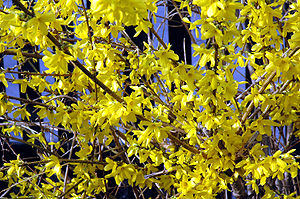How to trim hedges

Weighty winter season messes like these are rapid reminders of exactly how hedges– large and tiny– could go dreadfully incorrect when neglected or pruned incorrectly. Although sheared types rarely show natural plant types, they can have proper and typically gorgeous applications. However, when they fail, it can require months and even years to recreate the appeal and feature of these plantings. And, fairly typically, rebuilding a mature shrubbery not only takes years but additionally the cost of purchasing and replanting the plants themselves.
Strategy:.
Choose the right plant for your place:.
Shade plants for shade; sunlight plants for sunlight. Huge plants for huge areas. Small plants for small rooms.
Evergreen or Deciduous: Seldom do deciduous plants sit the hedge bill everyday of the year. Generally, the goal is year-round interest or privacy, so pick your plants carefully. Probabilities are, you’ll wish something that doesn’t shed its leaves come winter.
Large leaf or small leaf: Hedges are sheared regularly, and they’re reduced in means that can highlight where they have been chopped. Large leafed shrubbery plants like laurels could look quite chopped and diced even after a proper shearing. Tiny leafed shrubbery plants like boxwood seem to camouflage shearing a lot better.
Area properly when growing: Hedges are high-frequency maintenance plants. If they aren’t chopped at the very least once a year, they can lose their kind and be challenging to re-sculpt. When they are grown, spacing is usually a bit closer compared to would be done if the plants were created to expand to their organic form and size. Each plant is different; nevertheless, large shrubbery plants like Portugal manners, which grow to 30 tall and wide normally, ought to be planted concerning 18-24″ on center for hedgerows. (On Center refers to the distance from the center of one plant to the center of the next.).
DSC03616.
As soon as you have actually made and mounted your hedge, its time to begin planning when and how you can chop it. Timing your work is critical to keeping your shrubbery healthy. In locations with cool wintertimes, it is extremely important not to trim your shrubberies in fall. Chopping could stimulate new development, and when new growth arises in fall, it usually doesn’t have time to winterize itself to manage freezing temperature levels. And, if it does not apply new development, you will certainly be checking out a cut up hedge all wintertime long. Rather, attempt to time your pruning to happen simply before the growth surge in spring. This is an excellent time to shape up your hedge. After that, when it grows for springtime, soft, new leaves will certainly cover your cuts and offer the plant a fresh, charming look. If it increases excessive for your area or taste, give it another cut a couple of months later on. Simply wrap up all your chopping well before Labor Day if frost and snow go to your yard.
Hedges are trimmed from the outdoors, which takes out controlling growth bodily hormones and encourages the plant to grow out at every cut area (and various other spots also). This can also result in the inside of the plant defoliating, so it is very important to put in the time to hand clear the fragments. Left to accumulate, the buildup can give pest environment and motivate disease. Cleaning it out will help keep your shrubbery healthy and balanced.
Because thick, top-to-bottom foliage is the objective in growing most hedges, its crucial to ensure sunlight gets to every one of the leaves. To do this, be certain that the base of your hedge is somewhat broader than the top of the hedge. Otherwise, the bigger leading development may shade all-time low from needed sunlight. Be watchful of this as you trim layers off the plants. Trimming in this manner can really feel counter intuitive. Make the effort to pointer back as you’re functioning and note your improvement.
Begin your trimming task by cutting off fairly slim layers of plant material. In the long run you do not wish to have a hedge with many hairless places between. And, with a lot of shrubbery, reducing heavily in to wood without leaf development will lead to a hedge with irreversible bald places. Conifer shrubberies, particularly, have difficulty forming new growth from stems deep in the interior of the plant.
Making use of the ideal tool for the job is also essential. In addition to a good pair of hedge shears, keep a hand saw and pruner nearby too. These will certainly be practical ought to you run into any type of bigger branches that need sawing and to conclude any sort of final, fine-tuning cuts.



